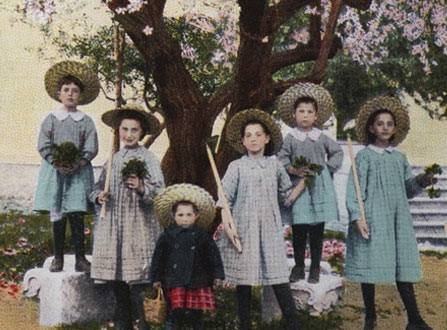Tu B'Shvat
Tu B’Shvat (the 15th of Shevat), also called Rosh Hashanah L’Ilanot, “The New Year of the Trees,” is an annual Jewish holiday. The festival was established by the sages as a means of fulfilling commandments related to the ripening of fruit and various tithes enumerated in the Torah. Over the last few centuries, it has become customary in some circles to observe a Seder Tu B’Shvat, a festive ceremonial meal with various blessings and customs.
The festival of Tu B’Shvat itself does not originate in the Torah. It is first mentioned in the Mishna where it is referred to as Rosh Hashanah L’Ilanot. Today, it is considered as the day that determines certain commandments related to fruits and certain laws related to the shmita cycle (the seven-year agricultural cycle mandated by the Torah in the Land of Israel) as well as various tithes. The Mishnah describes the dispute between Beit Hillel and Beit Shamai regarding the date of the New Year of the Trees—Beit Hillel declared the date as the 15th of the month of Shevat, while Beit Shamai stated that it was the first of the month.
Over the generations, various customs developed in relation to Tu B'Shvat. The custom of Tikkun Leil Tu B’Shvat, which was introduced sometime during the 17th and early 18th century, involved eating fruits of the Land of Israel. It is first mentioned in the book Ḥemdat Yamim published in 1731, and later in the book Peri Ets Hadar published in Venice in 1762, followed by many others texts.
In 1908, the Teachers’ Federation in the Land of Israel declared Tu B’Shvat as the "Festival of Planting", a decision adopted by the Jewish National Fund. In the agricultural settlements and kibbutzim, the holiday was celebrated in connection to nature, and was accompanied by Hebrew folk songs, plays and various written works. The holiday was incorporated into the pioneer ideology to celebrate the fruit of the land.
Seder Tu B’Shvat
The date of the 15th of Shevat as the “New Year of the Trees”" already appears in the Mishna, but the idea of a Seder Tu B’Shvat—including reading from scriptures, eating fruit and drinking wine—originated as a Kabbalist custom in Safed (Tzfat) in the 16th century. It was only 200 years later, with the publication of the book Ḥemdat Yamim in 1731, that the local custom of holding a Seder Tu B’Shvat spread beyond the borders of the Land of Israel. Ḥemdat Yamim is a somewhat mysterious text that emphasizes the Seder’s importance, and which many consider as promoting Sabbatean notions. Within a short time of its publication, the Seder Tu B’Shvat was being conducted in many Jewish communities from the Balkans to Italy and North Africa and as far east as Persia.
Tu B’Shvat at the National Library
The National Library’s collections contain an array of items related to the festival of Tu B’Shvat, including Tu B’Shvat haggadot that combine passages from the writings of the sages on the virtues of the Land of Israel and its fruits with texts on the conservation of the nature and landscape of the Land. The Library also preserves special Hebrew holiday songs, posters announcing Tu B’Shvat celebrations, tree plantings and parties, as well as photographs of tree plantings and Tu B’Shvat festivities around the country.





